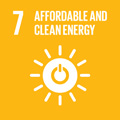- Docente: Micaela Vannini
- Credits: 6
- SSD: CHIM/07
- Language: Italian
- Teaching Mode: In-person learning (entirely or partially)
- Campus: Bologna
- Corso: First cycle degree programme (L) in Engineering Management (cod. 6679)
Learning outcomes
The course aims to provide the fundamental knowledge of chemistry needed to interpret the properties and behavior of materials used in major production processes, as well as to understand the environmental impact of these processes.
Course contents
New students don't need to have previous knowledge of Chemistry.
All lessons will be in Italian.
The course program is divided into the following parts:
1. The atom and atom models
- Atom composition (electrons, protons, and neutrons); Rutheford experiments, electromagnetic spectrum, Heisenberg principle.
- Atomic number, mass number, and isotopes.
- Atom structure and atomic models: Thompson, Rutherford, Bohr
- Schrodinger equation.
- Electronic configuration of atoms and ions; Pauli principle, Hund rules.
2. Mole, chemical reaction, and stoichiometry
- The concept of mole.
- Molecular and molar masses. Calculation of the number of moles.
- Chemical equation and balancing.
- Reaction yield.
3. The periodic table, the chemical bond, and the intermolecular interactions
- Periodic properties (atomic volume, ionization energy, electronic affinity, metallic character)
- The chemical bond.
- Lewis Formulas.
- Ionic bond: the concept of ionic valence
- Covalent bond: single and multiple bonds. Lewis and VB theories.
- Molecular geometry. VSPER model.
- Bond energy.
- Molecular polarity.
- Intermolecular forces.
4. Oxidation number and chemical names of inorganic compounds
- Calculation of oxidation number
- Classical and IUPAC nomeclatures
5. Form of aggregations: Liquid, solid, and gas
- The gas phase: Boyle law, Avogadro hypothesis, the law of perfect gas, Dalton law.
- The liquid phase: vapor pressure, viscosity, supercritical fluids
- The solid phase: crystalline lattices
6. Solutions and colligative properties
- Concentration units
- Colligative properties
- Phase diagrams with one or two phases
7. Thermodynamic and thermochemistry
- The first principle of thermodynamic
- Enthalpy definition
- Hess law
8. Acid-Base equilibrium
- Definition of equilibrium constant
- Arrhenius and bronsted-Lowry theories
- Kw, pH and pOH.
- pH calculation for strong acids and bases
9. Organic Chemistry fundamentals
- Hydrocarbons nomenclature
- Fossil fuels: types and characteristics. Calculation of octane number
- Bio-fuels
- Heteroatoms and functional groups
10. Polymeric materials
- Polymer classes
- Crystallinity of polymers
- Correlation between structure and properties
- Synthesis of polymers
- Polymer uses
- Polymer recycling
- Polymers from renewable resources and biodegradable polymers
11. Metallic materials
- Steel and cast iron production
- Iron-carbon diagrams
- Alloys
12. Composite materials
- Composite with polymer matrices
- Kevlar, carbon, and glass fibers
- Preparation methods
13. Mechanical properties
- Mechanical properties of polymers and steel
- Stress-strain diagram
- Dynamical mechanical testing
- Impact testing
Readings/Bibliography
One of the following texts is recommended for the part related to the basics in chemistry:
R. Chang, J. Overby. Fondamenti di Chimica Generale. McGraw-Hill
R.A. Michelin, A. Munari. Fondamenti di Chimica. CEA
The following text is recommended for material science:
W.F. Smith, J. Hashemi Scienza e tecnologia dei materiali. McGraw-Hill
To practice:
- you can solve the problems at the end of the chapters in the texts indicated above (where present).
- exercises available in the didactic material, prepared on the basis of those carried out during the lessons
Teaching methods
The course is delivered through in-class lectures, supported by the use of PowerPoint presentations.
Guided exercises will be conducted on the various topics covered in the syllabus. These exercises will be similar in format and level of difficulty to those included in the final exam.
Assessment methods
Student assessment is carried out through a final written exam lasting 2 hours, designed to evaluate the acquisition of the expected knowledge and skills. The use of notes, textbooks, or any supplementary materials is not permitted, with the sole exception of a calculator.
The exam consists of:
-
a multiple-choice section,
-
a section with open-ended questions,
-
and problem-solving exercises based on topics covered in class.
To sit the exam, students must register via the AlmaEsami platform by the indicated deadlines. At the beginning of the exam, students must present a valid ID document or university badge for identification purposes; failure to do so will result in exclusion from the exam.
The exam will be passed by students who demonstrate a solid understanding and practical ability with respect to the key concepts taught in the course, particularly in relation to the following educational objectives:
-
understanding the atomic structure of matter and its properties in various states of aggregation;
-
knowledge of the main properties of materials used in production processes;
-
ability to apply basic chemistry problem-solving methods.
Teaching tools
The teaching materials presented during the lectures will be made available in electronic format via the Virtuale platform.
While these materials—possibly supplemented by students’ personal lecture notes—can serve as a useful guide for understanding and selecting topics, they do not replace the recommended textbooks, which remain essential for in-depth study.
Office hours
See the website of Micaela Vannini
SDGs




This teaching activity contributes to the achievement of the Sustainable Development Goals of the UN 2030 Agenda.
